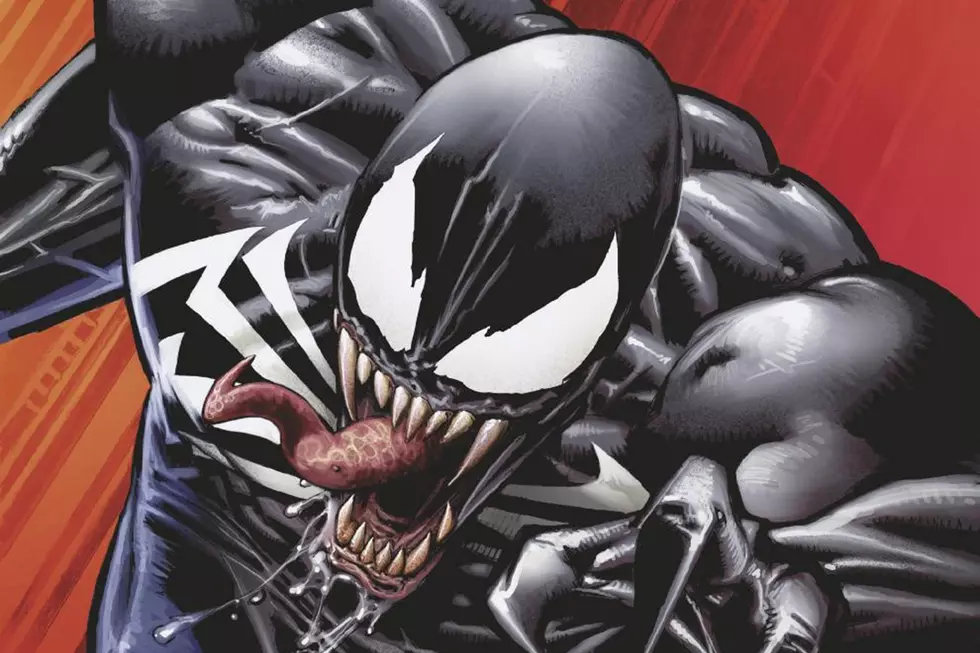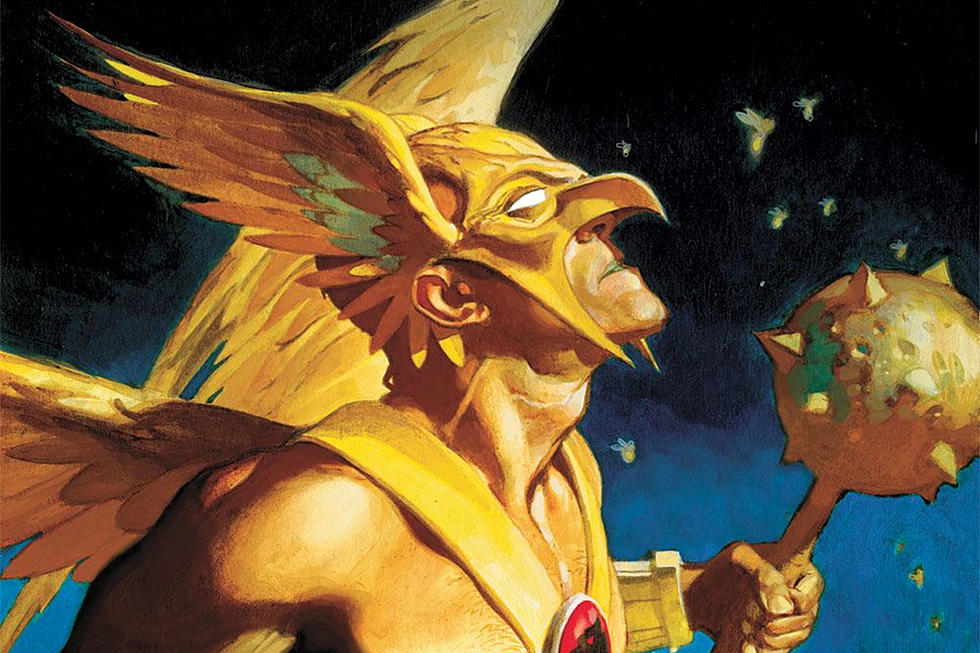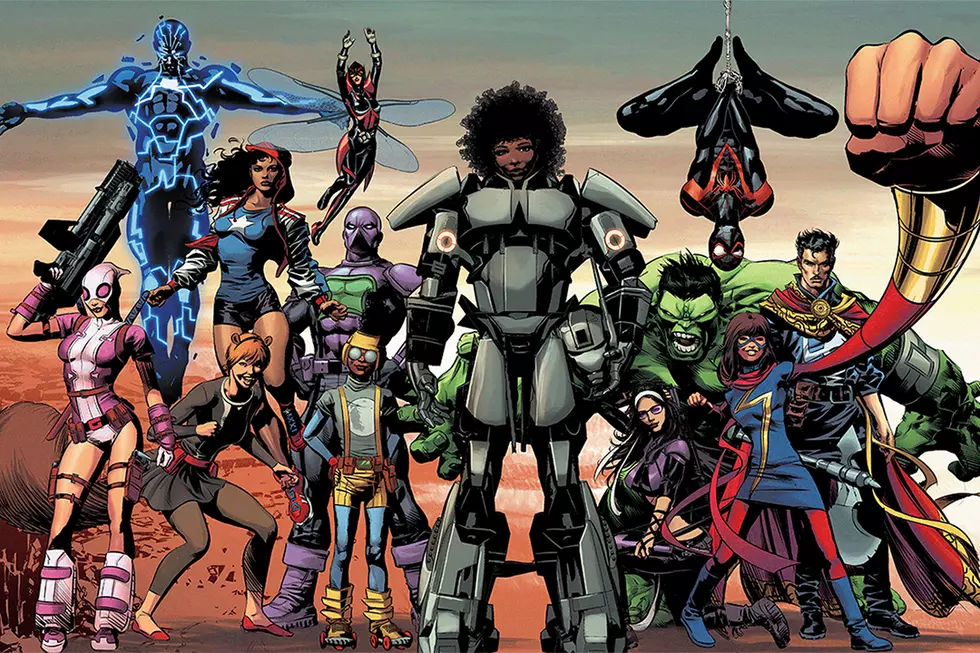
Looking Out For #1: In Defense Of The First Issue Relaunch
Relaunches. They're the worst. A sign of desperation from an industry obsessed with gimmicks and stunts. A transparent attempt to drive up sales with no respect for the audience, no regard for the author, no consideration for the history of the title.
Or, they're the opposite of that. New #1s might actually be the smartest way to tell ongoing stories, and the best way forward for the genre comic industry. More relaunches and more #1s could be exactly what comics needs.
Readers have been conditioned to think that superhero comics are theoretically immortal. So long as there's an audience, the book will continue. The creative and editorial teams can change (in pieces or overnight), the cast can shift, the lead character can even die (for a little while), but the book will go on as long as the sales are good. That's how Detective Comics made it all the way into the 800s. That's the longevity that all titles were meant to aspire to.
Few titles ever came close, and it seems unlikely any future title ever will -- and that's a good thing. The era of the extended run ended in 2011 with the renumbering of Detective and Action Comics and the suspension of Uncanny X-Men. Now the industry can let go of the sentimental nostalgia it attaches to big numbers and think about what actually works.
For anyone interested in good storytelling, relaunches are the model to aspire to. Relaunching a book when the creative team changes is not just a way to grab attention; it's a vote of confidence. It endorses the idea that different writers offer different takes on the characters; different artists bring different styles; and different stories have new beginnings, even in a shared and theoretically limitless fictional setting.
Stories also have endings, and new #1s are a tacit endorsement of that idea as well. Accepting new #1s as standard practice means letting creative teams resolve their stories -- inviting them to start with an ending in mind. In other words, it encourages constructed, coherent stories.
Marvel seems to be moving towards this approach. The upcoming ending of Young Avengers by Kieron Gillen and Jamie McKelvie is one obvious recent example. The creators revealed that they never intended to do more than a single year on the book. They told the story they wanted to tell.
Gillen called the run his "season one", and Marvel has yet to announce a season two. In reality this was season three, and Allan Heinberg and Jim Cheung wrote and drew the first and second seasons with the original Young Avengers run and Avengers: The Children's Crusade. If Young Avengers comes back for a fourth season, it'll get a new creative team with carte blanche to reshape the book their own way -- and another new #1 to give it the kick-off it deserves. The title won't exist in the interim just to keep the brand alive. It won't tread water with fill-ins and awkwardly rushed creative team hand-overs. That's a model all serials might aspire to match.
Rick Remender and Jerome Opeña's Uncanny X-Force is another example. Remender wrote a 35 issue story with Opeña as his principle artist, and the book ended when the story ended. A new Uncannny X-Force took its place, and a new X-Force will take that book's place next year, each one built around a different creative team and a different approach.
This season-based or story-based approach is also evident in one of Marvel's biggest projects; Dan Slott's Superior Spider-Man, with artists Humberto Ramos, Ryan Stegman and Giuseppe Camuncoli. The title corresponds to Otto Octavius's time as Spider-Man, and when that story ends and the true Peter Parker inevitably returns, you can be sure there'll be a new #1 to celebrate, and no more "Superior" in the title. That seems like fair recognition of the scale of the changes, and it allows the different stories to stand as whole works, but it doesn't prevent Slott from pursuing story threads from one incarnation into the next.
Young Avengers, Uncanny X-Force and Superior Spider-Man are not mini-series. They're ongoing series with planned endings. And they're some of the best superhero books of the past few years.
I suspect the publisher intends to apply this approach across the line. We already know that James Robinson and Leonard Kirk are relaunching Fantastic Four with a new #1 next year, sixteen months after Matt Fraction and Mark Bagley's Fantastic Four #1. I think that's smart. It's a clear recognition that Robinson is not just picking up where Fraction left off; he's telling his own story.
I hope we'll see a renumbering whenever Jonathan Hickman leaves Avengers, or when Brian Bendis leaves Uncanny X-Men (however far off those changes may be). I hope Hawkeye ends when Matt Fraction and David Aja are done with it. I don't want to see another creative team try to copy them. I want the Fraction/Aja Hawkeye to stand on its own as a work, undiluted, and if another Hawkeye title takes its place, I want the next creative team to put their stamp on it.
I'm even fine with new #1s when the creative team hasn't changed. We see that happening with Captain Marvel, which will have a new artist when it relaunches next year, but the same writer, Kelly Sue DeConnick, on the same character.
It's obviously in part a sales gimmick to give the book the Marvel NOW boost it didn't get when it launched ahead of Marvel NOW last year. It's also a sign of the publisher's faith in the title. But it can also be seen as the start of DeConnick's "season two," which makes it a clear jumping-on point for the readers, and why shouldn't that be signposted? Daytime soap operas run unbroken; quality dramas do not. If writers aspire to create quality entertainment, let them have seasons. Relaunch the book every year. Relaunch the book with every storyline.
The approach is not without risks. Reader fatigue is a big one. New #1s still need to mean something, or readers will cease to attach any value to them and the publishers will lose one of their most dependable ways to drive up sales. Renumbering has to go hand-in-hand with actual fresh starts, actual new stories, rather than being arbitrary markers in a stream.
More jumping-on points also means more jumping-off points, and there's a danger that long-term readers will leave a book in greater number if they no longer have to worry about getting every issue of a run. Yet I'm not sure how much of the market those compulsive completists account for, or that they were a particularly healthy market to tailor the product to. Both Marvel and DC have evidently made the call that the number of readers attracted by high number is not adequately balanced out by the number of readers put off by them.
With those legacy numbers largely abandoned, there's no particular value or boast to a book reaching the mid-30s. If a relaunch gives a book a better shot at attracting readers than a new #36, why not embrace it?
There are also commercial benefits to a season-based approach beyond the boost provided by a relaunch. It's easier to pick up collected editions of a finite story than to jump into a series where the only obvious starting point happened fifty years ago. It might also be easier to persuade readers to pick up new books if we break them of the idea that they're committing themselves to a long-term relationship.
My only real concern about the cycle of new #1s is that it tends to be tied more to writers than artists. Even if the writer and artist launch a book together, writers seem to have more ownership, and the artist is unlikely to be on every issue. Yet that shift towards the writer is happening anyway -- double-shipping means even the most prolific artist can't hope to maintain the pace -- and at least this approach increases an artists' chance of landing a profile-boosting first issue.
Does this mean that books must have planned endings? Does this mean that titles can't ever go on for 100 issues? Does this mean the end of the great long creator runs?
I don't think so. I think it just gives creative teams more options. If a writer gets to the end of a story and has an idea for the next one, and the publisher is happy to let the writer do it, there's no reason they couldn't stick with a book for seven years, through multiple new #1s. That seems to be exactly what Dan Slott is doing with two years and 70+ issues as lead Spider-Man writer under his belt.
Marvel is now experimenting with slapping new #1s on Marvel NOW comics that aren't #1s, just to show that those issues are jumping on points. That's perhaps a little confusing, and the increasing reliance on weird "point one" issues and, worse, "point AU", "point INH" and "point NOW" issues, needlessly overcomplicates it.
Marvel should either start these books over again (it starts to look conspicuous if some books get relaunched with a new creative team and others don't), or make the numbering for the storyline more prominent than the numbering for the book. After all, the only real point of issue numbers is to show readers what order to read the comics in. The point of putting a #1 on the cover is to tell readers where the story begins. Those numbers shouldn't have to fight each other.
I don't care if a comic has thirteen issues or eight hundred; I'm always going to start with just one.
More From ComicsAlliance




![Everything We Can’t Wait To See At San Diego Comic Con, Part One: Thursday & Friday [SDCC 2016]](http://townsquare.media/site/622/files/2016/07/SDCC-Featured.jpg?w=980&q=75)




